#Jute Fabric
Explore tagged Tumblr posts
Text

#Water proof lining in uae#Jute Fabric#Jute Hessian supplier in UAE#Jute Fabric supplier in Sharjah#Jute Fabric supplier in Dubai
0 notes
Text

My Joann’s fabrics haul that Lynx is already interested in
#VERY happy with the fabric I got..#the jute and cotton rug underneath was $7..! original price was $35 ^__^#also.. pansy stamps. come on#howling.txt
14 notes
·
View notes
Text
Best JUCO Fabric in Surat – Unmatched Quality
Discover the superior quality of JUCO fabric from Surat, where a flawless combination of cotton and jute yields a material that is both gentle to the touch and long-lasting. Our JUCO fabric is great for many uses, such as fashionable home décor or environmentally friendly bags. Its sustainability and adaptability make it stand out. Our JUCO fabric gives you the best of both worlds—it can be used to produce useful everyday things or stylish embellishments. Put your trust in the superior quality of JUCO cloth from Surat, where creativity and skillful workmanship collide. Find out more about Jiyan Enterprise's products.
0 notes
Text
We are Organic 100% export oriented Jute manufacturer in Bangladesh.
Jute is the Golden fibre of Bangladesh.
We work in assembling and sending out an extensive variety of Jute Sacks and Jute Sacks intended for bundling different items, including Cocoa beans, Espresso beans, Crude Cashew nuts, Hazelnuts, Peanuts, Shea nuts, Sesame Seeds, Soybeans, Heartbeats, Oil Seeds, Copra, Food grains, and Oats like Wheat, Rice, Maize, Grain, Sorghum, and Millet.
Jute yarn: We produce from 8 to 40 counts in different quality.
Jute Fabrics: different quality as per client's requirements.
Jute Ropes: Different quality as per client's requirements.
Jute Bags: As per client's requirements in different quality.
Jute Sacks: Different quality and different sizes as per client's requirements.
In the event that you are keen on buying Jute Packs or Jute Sacks for the bundling of Cocoa beans, Espresso beans, Cashew nuts, Hazelnuts, Peanuts, Shea nuts, Sesame seeds, Soybeans, Heartbeats, Oil seeds, Copra, Food grains, or Cereals (like Wheat, Rice, Maize, Grain, Sorghum, and Millet), kindly furnish us with itemized requests, including determinations, planned use, amount required, and the objective port. This data will empower us to give you valuing and a custom fitted proposition.
Jute is cultivating by our farmers 100% natural and Organic way way and manually in Bangladesh.
Email: [email protected]
WhatsApp: +8801630226364
For more info you can read this site
https://tinyurl.com/ymfuadkn
LinkedIn post URL

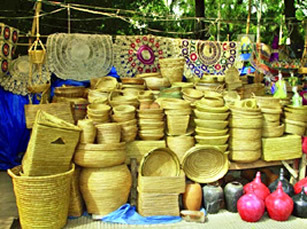

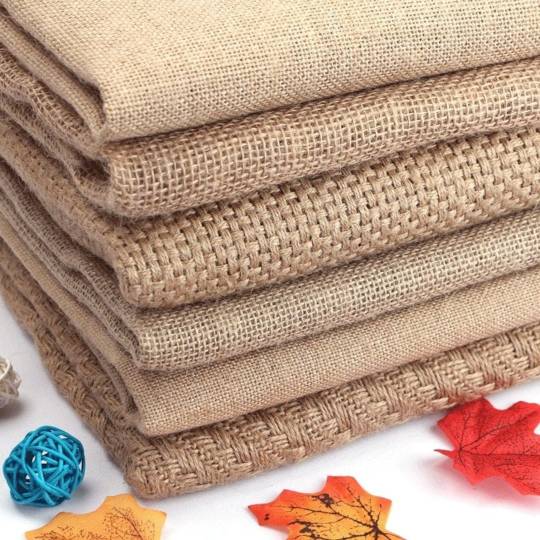






https://tinyurl.com/5n8he4hb
#jute rugs#jute rope#jute bags online#jute bags market#jute bag manufacturer#jute Yarn manufacturer#jute fabric manufacturer#jute sacks manufacturer#jute fibre manufacturer#jute carpet manufacturer#jute Handicrafts manufacturer#jute sand bag manufacturer#raw jute Exporter#jute farmer#organic Jute
1 note
·
View note
Text

What Is Jute? Uses and Impact of This Sustainable Fabric
Introduction:
As individuals become more aware of their impact on the planet, there is a rising need for eco-friendly products. The natural fibre jute, which has been used for many different purposes throughout history, is one such material that has recently come into popularity. In this blog, we will investigate the history of jute, its useful characteristics, and the good effects it has on both the natural world and human culture.
I. Defining Jute:
The stem of the jute plant (Corchorus species) is used to create the natural fibre known as jute. The tropical parts of Asia, especially in countries like India and Bangladesh, are the primary locations of its cultivation. Because of its adaptability and resilience, jute has been used for ages in a wide range of cultures. Biodegradability is a key factor in jute’s sustainability since it allows the material to break down in the environment without generating any toxins. When compared to other crops, jute requires less fertiliser and pesticide use during growing, making it more environmentally friendly.
II. Jute's Attractive Characteristics and Properties:
Jute is a popular sustainable fabric because it has various appealing characteristics and traits.
Strength:
Jute fibres are ideal for use in industrial settings due to their high strength and durability.
Breathability:
Comfort and coolness in hot weather are guaranteed by the breathable nature of jute cloth.
Absorption Of Moisture:
Jute is great for things like rugs and carpets because it can absorb moisture without becoming soggy.
Insulation:
To keep things at a pleasant temperature, jute’s excellent insulating capabilities come in handy. Mechanical processing of the stems removes the non-fibrous components, leaving usable jute fibres. The treated jute fibres are extremely long and glossy, making them ideal for use in textile production. Because of its adaptability, jute may be combined with both natural and synthetic fibres to produce new and exciting fabrics.
III. Uses Of Jute:
Jute’s adaptability and eco-friendliness mean that it can be used in a broad variety of contexts.
Fashion And Textiles:
In the textile and fashion industries, jute fabric is used to make sarees, skirts, blouses, and even bags. When used with other materials, jute’s aesthetic appeal and versatility are increased.
Visit our site to read more: https://vimpexltd.com/what-is-jute-uses-and-impact-of-this-sustainable-fabric/
0 notes
Text

Jute Blanket Basket USA
A jute blanket basket USA refers to a storage or decorative container made from jute material and designed to hold blankets. Jute is a natural fiber commonly used in various products due to its durability and eco-friendly characteristics. In this context, a jute blanket basket would typically be woven or constructed from jute strands, creating a sturdy yet rustic appearance.
1 note
·
View note
Text
8 Creative Ways To Reuse Your Jute Shoppers
Jute bags are better than plastic bags. Jute shoppers are highly popular among users these due to their eco-friendly and sustainable nature. These shopping bags are stylish and practical accessories. Jute shopping bags are used to carry groceries and other items. However, they can also be used in different creative ways in your daily life.

8 Creative Ways To Give Jute Shoppers A Second Life-
Eco-Friendly Gift Wrapping- These shopping bags can be used to wrap a gift for a special occasion. You just need to cut the bags to make it flat. Also, personalize them by adding colorful ribbons or twine to make them more appealing. They can add a rustic and charming appeal to your presents.
DIY Jute Planters- Jute shopping bags can be used as DIY planters for your indoor or outdoor garden. Cut the bags, fill soil into them and plant anything. It creates a sense of greenery in your living space as well as it is an eco-friendly alternative.
Jute Wall Art- You can use jute shopping bags to make eye-catching wall art. Cut them in different shapes and sizes to arrange them properly and glue them onto a canvas or cardboard. It is so simple but just needs creativity to be more appealing. You can create anything with them such as designs, inspirational words, etc. The high quality Natural Jute fabric adds depth and character to your creativity.
Jute Storage Solutions- You can use these bags as a storage option in your home. From the kitchen to the bathroom and beyond, you can use jute bags to store any items, including fruits and vegetables or towels or toiletries. They are undoubtedly helpful.
Jute Tote for Beach Days- Repurpose your jute bags into stylish beach totes. They are ideal to carry beach essentials such as towels, sunscreen, and snacks. Make the most out of your jute bags without any hesitation.
Jute Cushion Covers- Use jute bags and convert them into unique cushion covers. Be it your living room or outdoor seating area, these cushion covers can cater to your expectations while adding texture and warmth to your space.
Jute Table Runner- When it comes to dinner parties or family gatherings, your jute bags as a natural and stylish table runner.
In a nutshell, Jute shoppers can be used in different ways. With a little creativity and imagination, you can repurpose them as per your wish. Buy them online!! Visit www.jucofabs.com today!
0 notes
Text
Shop Organic Cotton Dress For Women at Sand By Shirin
Elevate your style with Organic sustainable chic by shopping our collection of organic cotton dresses at Sand By Shirin. Discover timeless pieces made from eco-friendly fabrics. Shop now and embrace fashion that cares for the planet.
#organic#shippingworldwide#slowfashion#comfywear#ethicalfashion#linen#women#fashion#pants#shirts#fabric#soft#traveloutfits#vegan#SAND#jute#fallcollection#croptop#aestheticfashion#craftsmanship#handcrafted#madewithlove#sustainability#occasionwear#timeless#mintdress#minimalzine#indiagram#shopthelook#streetstyle
0 notes
Text
ReshaMandi’s full stack digital ecosystem for natural fibres is empowering farmers, yarn manufacturers, weavers and retailers.
0 notes
Text
I keep thinking everyone knows the exact same information as me, but since I'm about to make more posts about textiles and clothing, as I'm reading the book on them, I'm going to write down some basic information, just in case it's not very common, because a lot of this I only gathered recently. If I get something wrong please correct me in a kind way!
So where does the clothing come from, and how do we make it? During most of the history, textiles were made by women, from natural materials; flax, wool, cotton, silk, jute. Recently we started using more synthetic materials, like acrylic, polyester, nylon, spandex. If you want to make clothing from the natural materials, like wool or cotton, they first need to be processed, cleaned and combed, then spun into yarn, or thread. Spinning is the process where women manage to pull a thin part of the material and spin the fibres into one consistent, firm thread. It's super impressive to watch them do it and I have no idea how they manage to make it consistent, I've not yet tried to do it myself.
Once the thread is done, it can be made into a textile by knitting, crochet, or weaving. There are also other more complex, decorative methods, like tatting or lacing.
For knitting, you need two needles, or a special circular needle, or, there are also knitting machines, which you can use to make woolen fabric. For weaving, you need a loom. For crochet, you need a crochet hook. While knitting and weaving can be done by a machine, crochet can only be done by hand. Woven fabrics are firm, sturdy, durable, and not stretchy, while knit fabric is the most stretchy and soft. I'm not sure about crochet since I only have one crochet garment, but mine is very sturdy!
All of these methods were historically done by women; families were able to grow flax plants close to their homes, and women would then create linens, woven textiles made from processed flax, which was used to make sheets and clothing. Linen was specifically useful in keeping people clean, since it's very good at absorbing moisture. Used as an under-garment, it was capable of absorbing sweat, and protecting the outer layers, which were not washed. Experiments have shown that frequently changing into clean linen was more effective at keeping clean than showering and then putting on the same clothing back on.
Women's ability to create clothing was sadly exploited, and women were even banned to sell it commercially, or from competing at the commercial market, but their husbands were allowed to profit off of their craft.
In the USA, cotton was the most produced material, however for this too people were enslaved and exploited; cotton took human labour to grow, harvest and process, it also required a lot of water, and caused destruction of environment, because of the chemicals used in it's growth, and the unsustainability of monocrops.
Creating a piece of clothing out of textiles, or sewing, is a process that still cannot be completely automated; while you can use a sewing machine, you cannot make a machine that would produce a whole garment out of textiles. No mass-produced piece of clothing was sewn by a machine, it always has to be made by a human being. This is why a lot of the sewing labour is currently outsourced to third-world countries and companies use modern slavery in order to create fast fashion; there is no machine that can do it, so by the rules of capitalism, the companies are trying to get that labour as cheap as possible, often at the cost of human lives.
We didn't use to have as many garments as we do today, in the 18th century people would have two outfits, one for normal days of the week, and one for Sunday. The clothing they owned was usually made to fit them exactly, either by a female member of the family, or a seamstress, and these garments were made to last them for decades. As clothing became cheaper to buy than to make at home, and more of it became mass-produced, people started acquiring more of it, but also using it for lesser period of time. This would eventually grow into a bigger problem, due to the amount of chemicals and labour used to grow, process, dye and sew the garments, and the amount of waste we were starting to accumulate.
Introduction of synthetic materials, like acrylic, made the yarn and the textiles much cheaper, however it lacks the important properties natural materials have. Do you ever notice how synthetic garments sometimes continue smelling bad even after you wash them? That is because they'll absorb sweat, but become hydrophobic when wet, meaning they will take in your sweat, but refuse to let it go once they're in the water. This means that the longer you have them, the worst their stink becomes. This, of course, can be hidden by the generous use of scented fabric softener, but it won't exactly make the garment clean. This information I've learned recently, but it helped me identify what were the most synthetic pieces of clothing I had. Acrylic clothing had also proven to shed 1.5 more microplastics than any other polyester when put into the washing machine.
Having our clothing grown, processed, spun, woven/knit, and then sewn far out of sight, it's possible to lose the sight of where it came from, or how it's made. Only by trying to do it yourself, or learning closely about the process can one learn to appreciate what a monumental task it is, to create fabric, or a garment. Other than the synthetic textiles, of which I still know very little of, all of the natural clothing is a product of plants and animals, it takes land, farming, agriculture and water to grow the plants, raise the animals, and then labour to process and spin the fibres. It's also something people used to do in their gardens, inside of their homes, something that was normal for women to do, and to trade for anything else they needed, saving them from having to work for wages. Women making fabric was always to the benefit of everyone around them, while m*n taking over the industry and doing it commercially, ultimately brought slave labour to a lot of people, cheap and low quality garments to the select few, and money to the hands of the exploiters.
Being curious about clothing and what becomes of it, is a big benefit to the environment and the future of the earth! Knowing what the textile industry is doing, and how does it affect the planet, can be a great motivator to try and sew, or upcycle and mend clothing, or create garments. It's presented to us as something women were forced to do in the past, and it's connected to 'feminine hobbies', but in actuality, it is power to create something humans cannot do without. Women in the past used it's power too, whenever they could. And we are the only ones who ever used this power for good.
#textiles#clothing#linen#women's history#herstory#radical feminism#sewing#weaving#crochet#synthetic fiber#random information on clothing i've gathered#i feel much smarter so i wanna share!#if anyone knows more and wants to share please add#my sources are the book Worn#and dozens of youtube videos on textiles I've watched recently
145 notes
·
View notes
Text

Jute fabric, also known as the Golden Fiber, is naturally a versatile fiber that is 100% bio degradable and thus sustainable.
#Jute Fabric supplier in UAE#Jute Fabric supplier in Dubai#Jute Fabric supplier in Sharjah#Jute Hessian supplier in UAE
0 notes
Text
Interiors: Basics of Styles
The 9 Styles of Interiors are maximalist, brutalist, coastal, minimalist, rustic, art deco, Hollywood Regency, midcentury modern and modern organic and they all have unique characteristics. Let’s dive in.
Maximalism
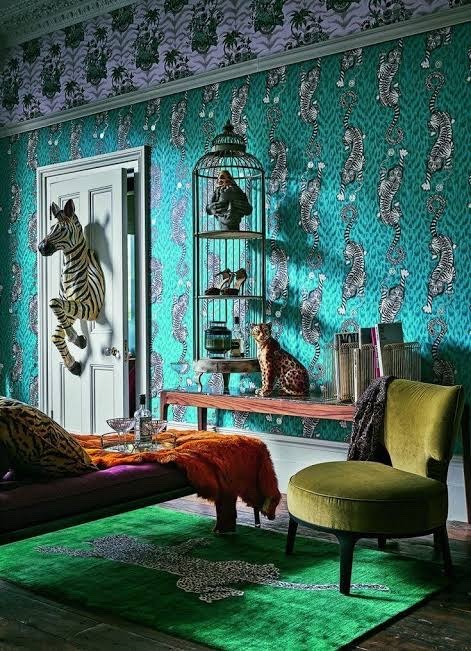
* Bold colors.
* Bright wallpaper.
* Mixed patterns with contrasting motifs, like animal print, geometric shapes, or florals.
* Ornate accents, like chandeliers.
* Layered fabrics.
* Statement pieces.
Notable people: Kelly Wearstler, Martin Brudnizki, Dorothy Draper and the Greenbriar Resort
Brutalist
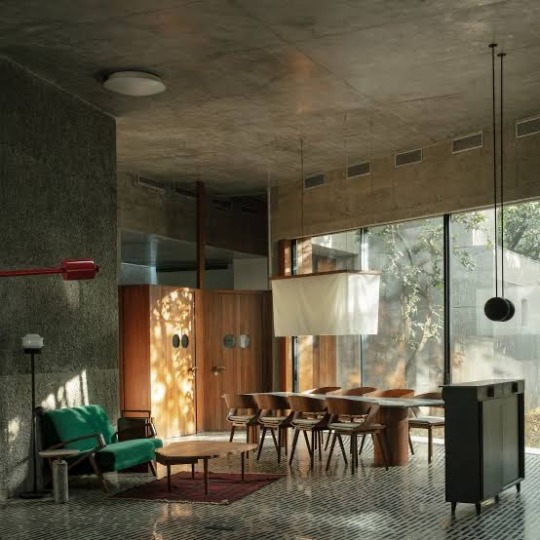
* Raw Materials. At its core, Brutalist interior design honors raw materials—showcasing the honesty of construction
* Geometric Shapes
* Textured Surfaces
* Unadorned Minimalism
* Focus on Function
Notable people: Le Corbusier, Marcel Breuer, Moshe Safdie
Coastal
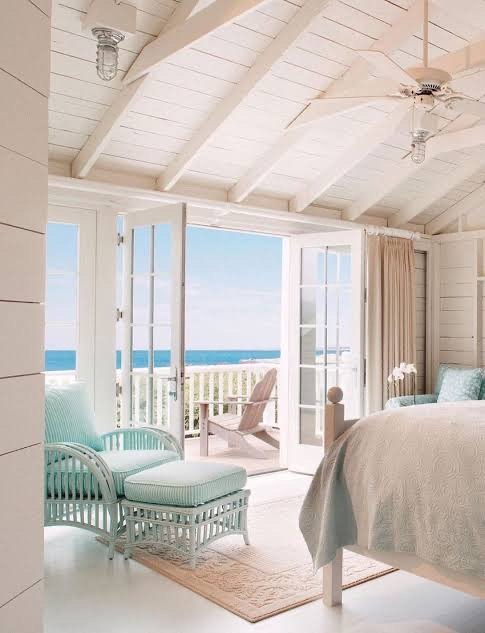
* Natural Light
* Crisp whites
* Layered blue tones
* Jute textures
* Stripes
* Linen upholstery
Notable people: William Pahlmann, Amy Aidinis Hirsch, Brett Sugerman and Giselle Loor Sugerman
Minimalist
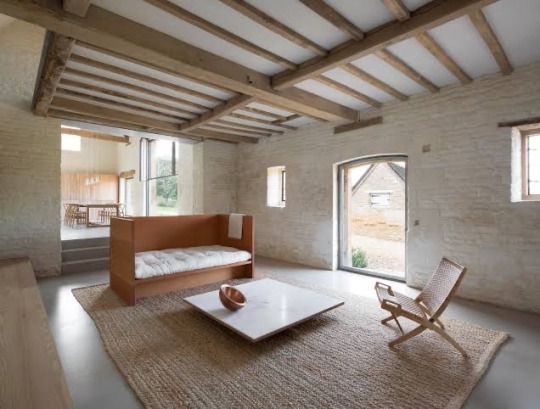
* Simple lines.
* Monochromatic or neutral color palettes.
* Limited furniture.
* Limited decorative objects.
* Storage solutions that keep the space uncluttered.
* Open floor plans.
* Natural light
Notable people: Donald Judd, Ludwig Mies van der Rohe, David Chipperfield
Rustic

* Main Colors: Wood grains or browns, beiges, or warmer shades
* of white.
* Accent Colors: Muted colors - tans, reds, blues, greens, yellows,
* and grays.
* Shapes: Rugged, imperfect lines and silhouettes.
* Fixture Finishes: Iron, pewter, copper, or brass.
* Aesthetic: Imperfect but warm and inviting. Decor/Art Style: Animal hides and fur, antlers, throws, pillows,
* and rugs with simple motifs or patterns.
Notable people: Alexander Waterworth, Grey Walker, Katherine Pooley, Bill Hovard, Jean Stoffer
Art deco

* Streamlined, symmetrical forms.
* Geometric designs as ornamentation; it's common to see shapes such as: Trapezoids
* Rich material and textile palettes
* Ornamental light fixtures such as chandeliers or sconces.
Notable people: Jacques Ruhlmann and Maurice Dufrène, Eliel Saarinen
Hollywood Regency

* richly layered textures
* high contrast patterns
* metallic finishes
* vibrant colors
Notable people: Dorothy Draper, George Vernon Russell, Douglas Honnold, John Woolf, and Paul R. Williams.
Midcentury Modern
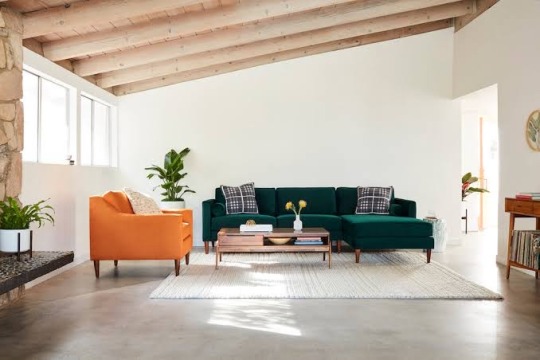
* clean lines
* muted tones
* a combination of natural and manmade materials
* graphic shapes
* vibrant colours
* integrating indoor and outdoor motifs
Notable people: Arne Jacobsen, Charles and Ray Eames, Eero Saarinen
Modern Organic

* The modern organic interior design style mixes minimalism, midcentury modern, and boho flair
* Clean minimalism and sleek lines meet nature-inspired shapes, organic textures, and rustic elements
* By adding natural textures and shapes, the modern organic decor is warm, inviting, soulful, and elegant.
#c suite#powerful woman#strong women#ceo aesthetic#personal growth#that girl#productivity#q/a#getting your life together#balance#cultural education#rich bitch guide#interiors
314 notes
·
View notes
Text
Leave it to me

Leaning casually against the side of the low partition between her open living space and modest kitchen, Hermione watches as Malfoy speaks to Crookshanks. Malfoy is leaning close to the orange cat and whispering conspiratorially, oblivious to her presence. To her chagrin, the great ball of fluff paws at a length of thick jute that the impossibly tall, impeccably, and insufferably attractive man is dragging back and forth across the countertop in front of him, entirely too kitten-like for his advanced years.
It was already quite late; Hermione had been in bed reading when the floo had roared to life, signalling that someone was stepping through the network directly into her home without any forewarning or invitation. She knew her floo was only open to a select few, and not hearing anyone calling her name in panic, she had taken her time leaving her room to discover who was visiting at such a late hour. As no one was sobbing, cursing the universe, or drunkenly knocking things over, the possible list of visitors was much shorter than the total of all who had an open invitation to come and go as they pleased. It became a list of one when she heard the telltale sound of expensive shoes clicking across flagstone, then hardwood, and finally to tile as they made their way to her kitchen.
Malfoy, or Draco as he continues to insist she refers to him as in their daily dealings, had been added to her privileged personal floo access barely two weeks before this unannounced intrusion. He was adamant that it was for the simple reason that it would make consulting with her on their shared curse-breaking research much easier, as owls were notoriously slow in relaying urgent messages, such as they would need during this particular project. Despite her best efforts, Draco was not persuaded to use a muggle cell phone, as the man’s ancient wards made it impossible to guarantee the messages would reach him with any reliability. So far, this had led him to stop by almost daily with meticulous notes, rare reference texts, enough expensive coffee to drown a small village, and enough treats to have won over her aged familiar. Work on their current project, an artefact locked behind an obscure ancient curse, had kept him over for hours on end, discussing and debating the minutiae of facts and methods, ordering in meals, and keeping late hours as they unravelled the complicated nature that kept the artefact in question beyond reach. He had thoroughly, without apology, inserted himself into her personal space as if he belonged in her orbit on the sole merit of his existence.
“Yes, that’s quite right. This is prey most noble for one such as yourself. Intelligent beast, aren’t you? A chaser to the bone.” Draco keeps his voice low, speaking to her familiar with in a voice barely above a whisper, and yet it carries well through the space; it is soft and deep, sending a not-unpleasant tingle through Hermione’s nerves as she watches him. Next to where he stands in a new stack of what appears to be ancient scrolls, possibly his reason for such a late visit. A discovery that apparently could not wait for the sun to rise. His platinum blonde hair, almost white, sweeps down across his forehead. His forearms flex almost imperceptibly as he keeps the end of the jute length just out of reach of sharp claws. His shoulders stretch the fabric of his white Oxford in ways that make her bite her lip, imagining the expanse of skin and the muscle beneath it. Hermione wonders briefly how warm his skin is. Would there be any resistance? How would it feel to run her nails along his spine, and would she be able to differentiate the notches between them? All in all, Draco Malfoy has thoroughly ruined her without even touching her.
“That’s not a cat toy, I’ll have you know Malfoy. Honestly, it shouldn’t even be out here in the first place.”
Briefly, Malfoy glances up and away from the cat, cutting his eyes to Hermione and back to the jute cord in his hands as Crookshanks triumphantly catches its end. He does a double take so fast it looks almost painful. Hermione can see the second his jaw goes slack. She registers the slight dilation of his pupils. There is a hitch in his breath, and Hermione swears she hears his brain crashing. It is precisely the reaction she was hoping for. She watches as his eyes scan slowly down from the crown of her head downward from her hair, plaited carefully out of the way, to the slightly parted silk robe she wears, offering a calculatedly teasing view of the lace basque beneath. As she leans, she notices him pause in his appraisal again, further down, taking in the hint of her exposed thigh just above her bent knee.
“Where should it be then, Granger?” She watches as the pink tip of his tongue darts out, wets his lips, and he reaches his other hand to the jute rope, coiling it slowly as he keeps his eyes on her, his voice low and coaxing. Hermione crooks a finger at him, beckoning, and uses her hip to push off the partition, turning around to begin her walk back down the hallway from which she had previously come. A few steps later, Hermione again hears the sound of expensive soles on tile, and then they transition onto the hardwood floor of the hallway as he begins to follow behind her.
“Right then, Granger. Leave it to me.” After all, some discoveries absolutely could not wait a moment longer.
#draco x hermione#dhr fandom#dhr fic#hermione x draco#draco malfoy#hermione granger#dramione prompt#drabble#dramione#jute rope#robe#cursebreaker hermione#curse breaker draco#crookshanks#harry potter#semi spicy#dramione fanfiction#dhr fanfiction#fanfiction
24 notes
·
View notes
Text
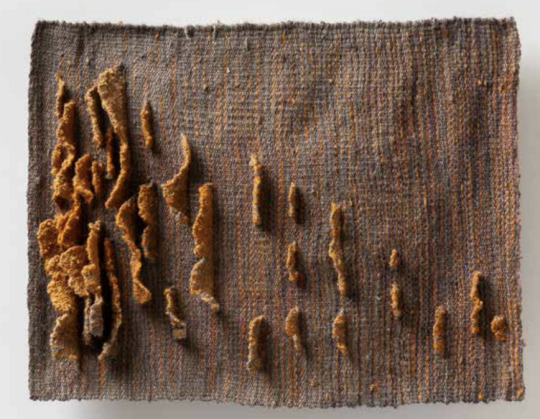
Tony Busch. Lichen, 2023.
hand-dyed jute fabric, cotton warp
74 notes
·
View notes
Text
On Altmeri textiles...
Altmer culture is permeated by textiles. Textile art is the most prevalent form of Altmer Art outside of Summerset, and it includes tapestries; utilitary textiles like rugs, bedcovers, dividers and elaborate shawls; its main forms are plant fibers such as jute fiber, papires, wicker and cotton, insect fiber (less common than in Morrowind, obviously) like spidersilk and silkworm silk, and livestock fiber such as wool, and indrik fibers. Altmer have been inventive about where they get their fibers and so it is not uncommon to see fibers made from things that would possibly shock other folks considered the pinnacle of crafting prowess in the isles. A good tapestry artist can even dye sinew and incorporate it into their work, it is said. Much of their work is aided by magic or mechanisms like the spinning wheel, and they highly value vibrant pigments. The brighter the color, the higher the caste, and as such there have been color restrictions in place depending on one's station.
They prefer preciousness and detailed work to sturdy textiles due to the weather of the Isles, but Altmer outside Summerset are known to take pride in using their inherited techniques to make warm garments just as easily.
Light and semi-transparent fabrics are held in high esteem, and folding them to achieve brighter colors has led to layered yet cool outwear made of tulle similes and shining silks in the shapes of togas. In fact, much of their clothes are elaborate in their simplicity, since they consist of a single piece of fabric with minimal stitching, folded to taste and ancestral/family customs. Some families have their signature way of dressing, which can include patterns, ways of layering clothes, or even the fabric and its colors.
Adornments are highly valued and it's not unlikely to see an Altmer in brocaded clothes, laden with jewelry usually embellished with aetherquartz and culanda, as well as other more typical stones.
The fact that they're so traditional has led to tremendous technological leaps in the improvement of family techniques being often zealously guarded, and, as a result, certain textile artists are seen as artist-gods for their irreplicable work. Possession of one such garment or piece made by these lineages of masters is a sign of station and prestige
#tesblr#fanficblr#tes headcanons#altmer#worldbuilding#elder scrolls lore#my writing#my hcs#orfeoarte
99 notes
·
View notes
Note
hi! i’ve seen you mention that linen is antibacterial - are there any other fabrics that are antibacterial? i tried looking it up but google would only give me info for fabrics that have received synthetic antibacterial treatments or coatings
Yes! Many natural fabrics are anti-bacterial. It works much better than the coatings too, because the coating will wear off.
Wool is extremely anti-bacterial. You don't actually have to wash it mostly ever, usually only airing it will be enough, because of the anti-bacterial qualities. The other common animal fiber silk is also anti-bacterial.
From the (common) plant fibers other than linen also hemp, jute and nettle are anti-bacterial (they are all fairly similar fibers as linen). Cotton and rayon (and other similar chemically modified plant fibers) are basically the only (common) natural textiles that are not anti-bacterial.
212 notes
·
View notes